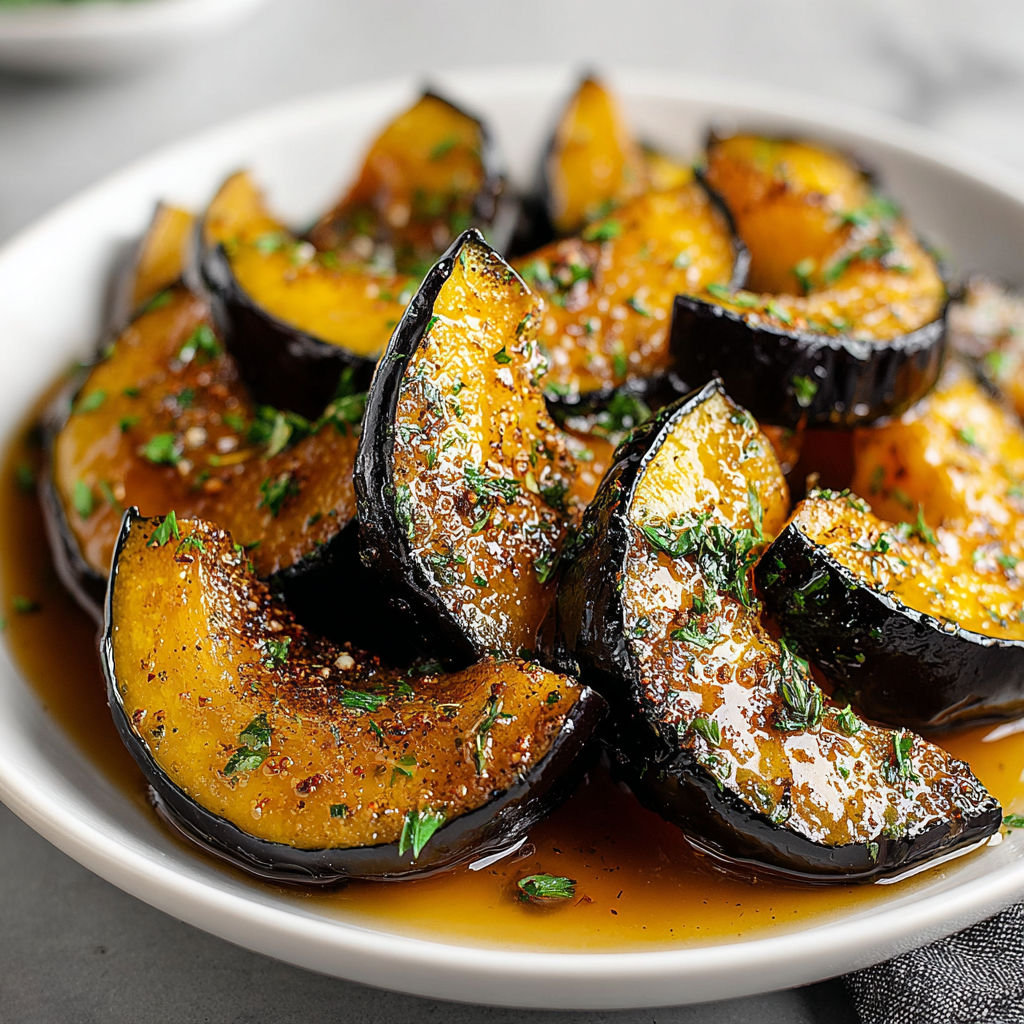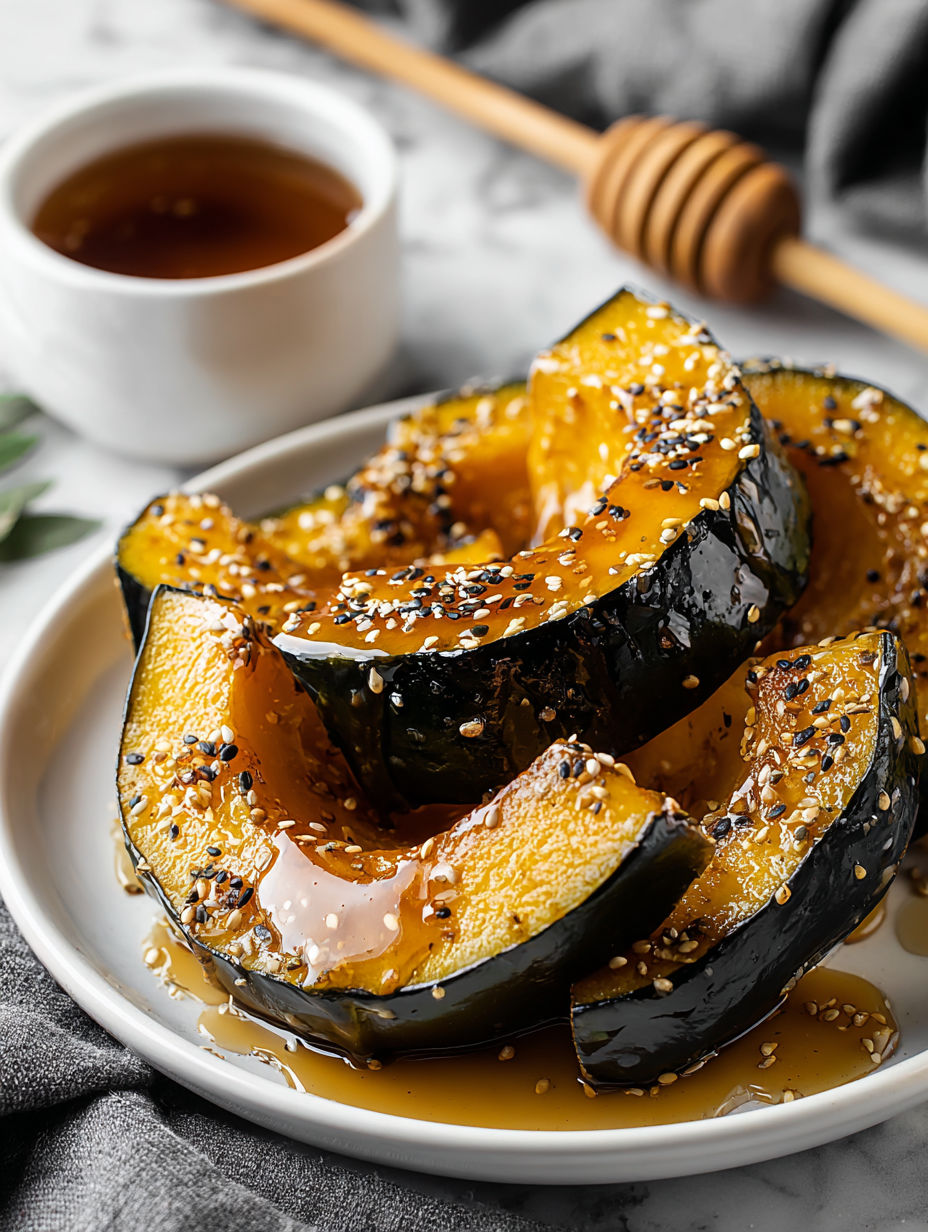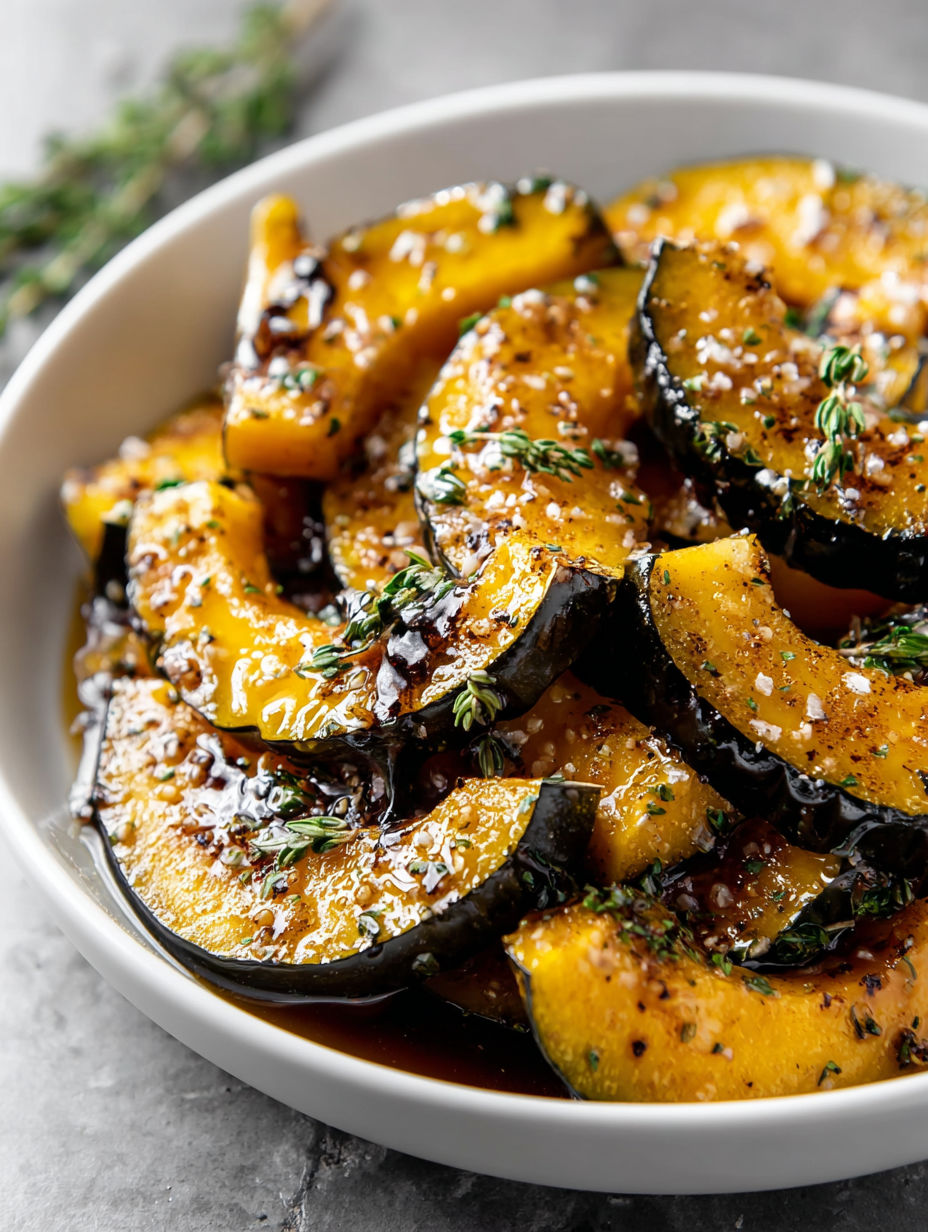 Bookmark
Bookmark
Mapleroasted acorn squash wedges are the perfect way to bring warm, comforting fall flavors to your table. The natural sweetness of maple syrup blends beautifully with cinnamon and nutmeg, creating a dish that feels both nostalgic and fresh. This side has become a regular at my autumn dinners, instantly filling the kitchen with the cozy scents of the season and making any meal feel special.
I first made this on a chilly October afternoon, and the caramelized edges and sweet glaze won over everyone at the table. Now it’s one of those dishes I make whenever I want that unmistakable taste of fall.
Ingredients
- Acorn squash: One medium acorn squash cut into uniform wedges ensures even roasting
- Pure maple syrup: Lends natural sweetness and helps create a glossy glaze
- Extra virgin olive oil: Balances richness and promotes caramelization
- Ground cinnamon: Adds warmth and depth, a classic autumn spice
- Ground nutmeg: Offers an earthy, slightly sweet note that enhances the squash
- Salt: Highlights the flavors and balances the sweetness
- Freshly ground black pepper: Introduces a subtle hint of heat and complexity
Instructions
- Prepare the Squash:
- Carefully halve the acorn squash and scoop out all seeds. Cut into evenly sized threequarterinch wedges to make sure they cook uniformly. This step is crucial to avoid some pieces being undercooked while others overcook.
- Mix the Glaze:
- In a small bowl, whisk together the maple syrup, olive oil, cinnamon, nutmeg, salt, and black pepper. Aim for a smooth, glossy mixture that will coat the squash thoroughly and infuse it with flavor.
- Coat the Wedges:
- Line a large baking sheet with parchment paper for easy cleanup. Arrange the squash wedges in a single layer, ensuring they are not crowded. Brush or toss each wedge generously with the maple glaze so every bite gets that signature sweet and spiced coating.
- Roast to Perfection:
- Preheat your oven to 400 degrees Fahrenheit (200 degrees Celsius). Place the baking sheet in the oven and roast the squash for about 25 to 30 minutes. Flip the wedges halfway through roasting to encourage even caramelization and tender, golden edges. The squash should be forktender when done and have a beautiful roasted color.
- Finish and Serve:
- For an extra layer of flavor, sprinkle the hot wedges lightly with truffle salt just before serving. This enhances the natural sweetness and provides an aromatic earthiness that makes the dish even more memorable.

My favorite ingredient here is the maple syrup. It’s not just the sweetness but how it caramelizes and glazes the squash, creating a perfect contrast between tender flesh and slightly crispy edges. One autumn, this dish was the centerpiece of a quiet family dinner that turned into a cherished tradition. It’s amazing how simple ingredients can bring so much comfort and connection.
Storage Tips
Let the roasted squash cool completely before transferring to an airtight container. Refrigerate for up to four days. To reheat, place in a hot oven or under the broiler for a few minutes to regain that lovely caramelized texture.
Ingredient Substitutions
Maple syrup can be swapped with honey or date syrup for different flavor profiles. Honey adds a floral sweetness, while date syrup gives a richer, molasseslike touch. Olive oil may be replaced with melted coconut oil to introduce a mild tropical aroma that complements the spices well. If truffle salt isn’t available, smoked salt makes a fantastic alternative for adding depth and a subtle smoky finish.
Serving Suggestions
Serve alongside roasted poultry or wild rice for a comforting fall main. A crisp salad with vinaigrette cuts the richness nicely. For a gourmet touch, drizzle with brown butter or sprinkle with candied pecans to add crunch and complexity. Sprinkle fresh herbs like thyme or parsley just before serving for color and extra aroma. You can switch nutmeg for allspice or cloves to adjust spices according to your preference. This recipe easily pairs with winter squash varieties like delicata or kabocha if acorn is unavailable.

This maple roasted acorn squash is a simple, cozy side that elevates any autumn meal. Serve warm and enjoy the caramelized sweetness.
Common Questions About Recipes
- → Why are my squash wedges soggy instead of caramelized?
Soggy wedges often result from overcrowding the baking sheet, causing steaming rather than roasting. Ensure the wedges have space around them and consider using convection heat for better caramelization.
- → Can I prepare these in advance?
You can cut and glaze the wedges hours ahead but roast them just before serving to retain crispness. Reheat leftovers in a hot oven to restore texture.
- → How do I avoid burning the maple glaze?
Roast at 400°F and flip wedges halfway through cooking to promote even browning. If edges darken too quickly, loosely tent with foil to protect them.
- → Should I peel the acorn squash?
Peeling is unnecessary as the skin becomes tender and edible after roasting, adding color and structure to the wedges.
- → What can I use instead of truffle salt for finishing?
Smoked salt makes a great alternative, offering an earthy, slightly smoky flavor that complements the roasted and sweet notes nicely.
